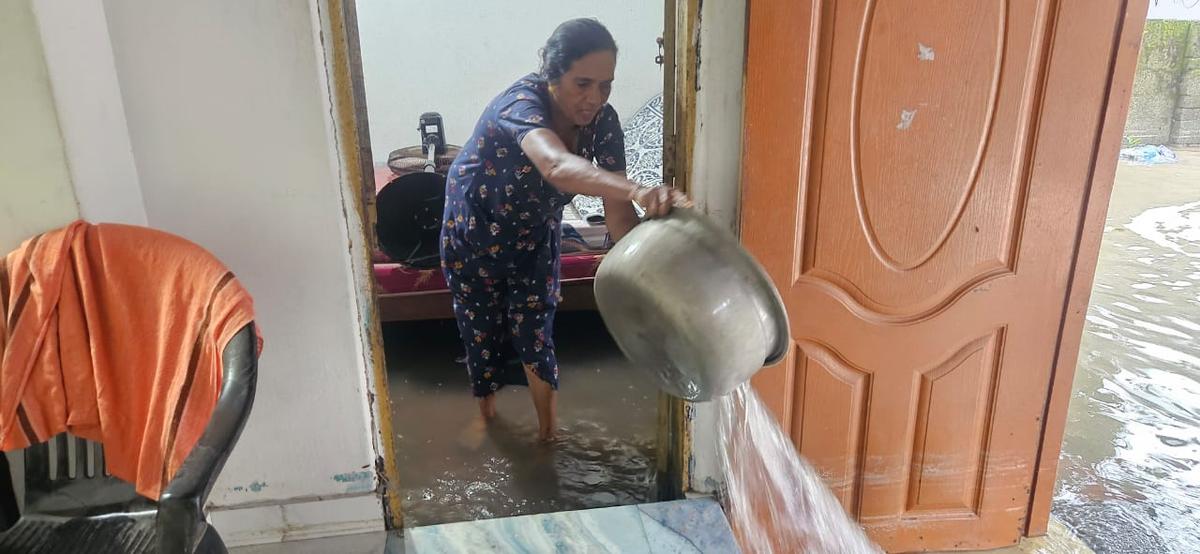
A house at Edavanakkad in Ernakulam flooded due to sea incursion.
| Photo Credit: Special Arrangement
The coastal areas of Ernakulam district continued to be battered by invading tidal waves for the third consecutive day on Sunday (June 15), though the direction of oceanic waves and anti-clockwise winds slightly cushioned the impact.
Edavanakkad panchayat started experiencing rough seas on Friday (June 13), as the monsoon intensified following a brief lull since its onset on May 24. Waves unexpectedly swept into several households, especially in wards 9 and 13, on Friday afternoon.

A woman in Chellanam tries to clear floodwater from her house amid sea incursion on June 15.
| Photo Credit:
Special Arrangement
“On Sunday, the sea was especially rough, and what swept into houses was murky water that left behind sludge as it receded,” said Kochuthresya Nishil, member of Ward 13.
In Chellanam, the sea remained rough and windy during the morning low tide before calming down somewhat later in the day. Stretches of the shoreline without geobags continue to remain vulnerable. Nearly 4km to 5 km starting from Puthenthode up to Beach Road and extending to Fort Kochi remains without barriers to stave off tidal waves.
“This is due to two reasons. In some stretches, houses are built too close to the seawall, leaving no space to place the bags. In others, there is no sand to anchor the geobags,” said V.T. Sebastian, general convener of the Chellanam-Kochi Janakeeya Vedhi.
Though ₹1.25 crore was allocated from the Kerala State Disaster Management Fund for placing geobags as a temporary measure in Chellanam, not much progress has been made. The rough weather has made it nearly impossible to move earthmovers to the shore.
The impact of the full moon-induced high tide is expected to last until June 19, ahead of the next new moon on June 25. “That small window should be used to complete the geobag work,” said Mr. Sebastian.
The coastal areas in the district have been spared the worst since new moon-induced high tides from May 25 due to the movement of the oceanic current from north to south and the north-west wind direction, instead of the opposite direction.
“That was also one of the reasons why containers from the sunken ship off the Kochi coast were swept into Alappuzha and Kollam shores rather than Kochi. That is also why the containers from the ship that caught fire off Beypore are likely to drift toward Kochi,” Mr. Sebastian said.
Published – June 15, 2025 07:46 pm IST